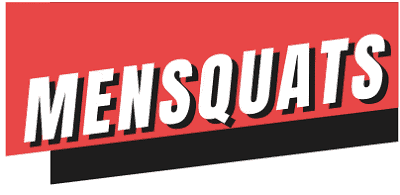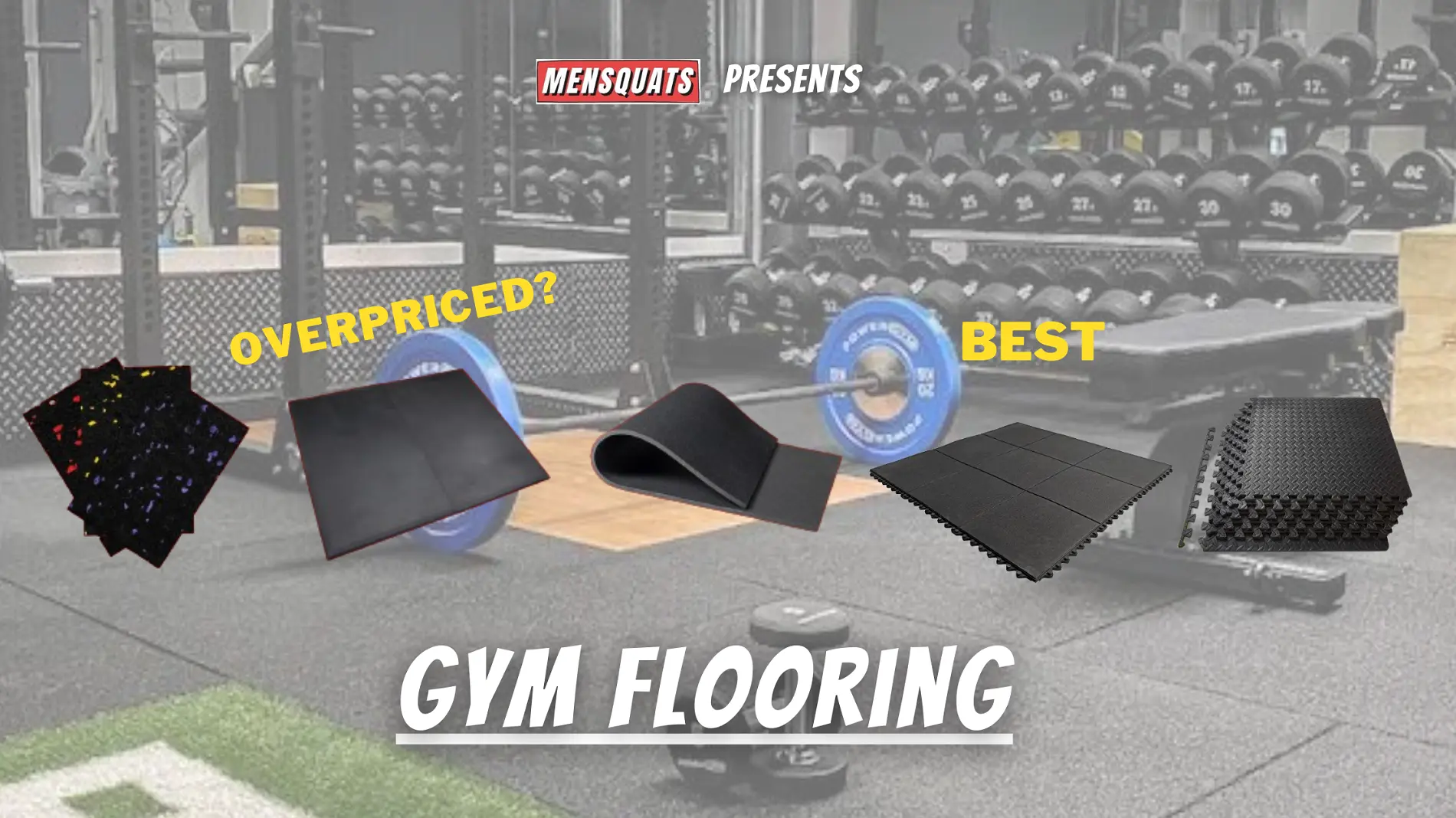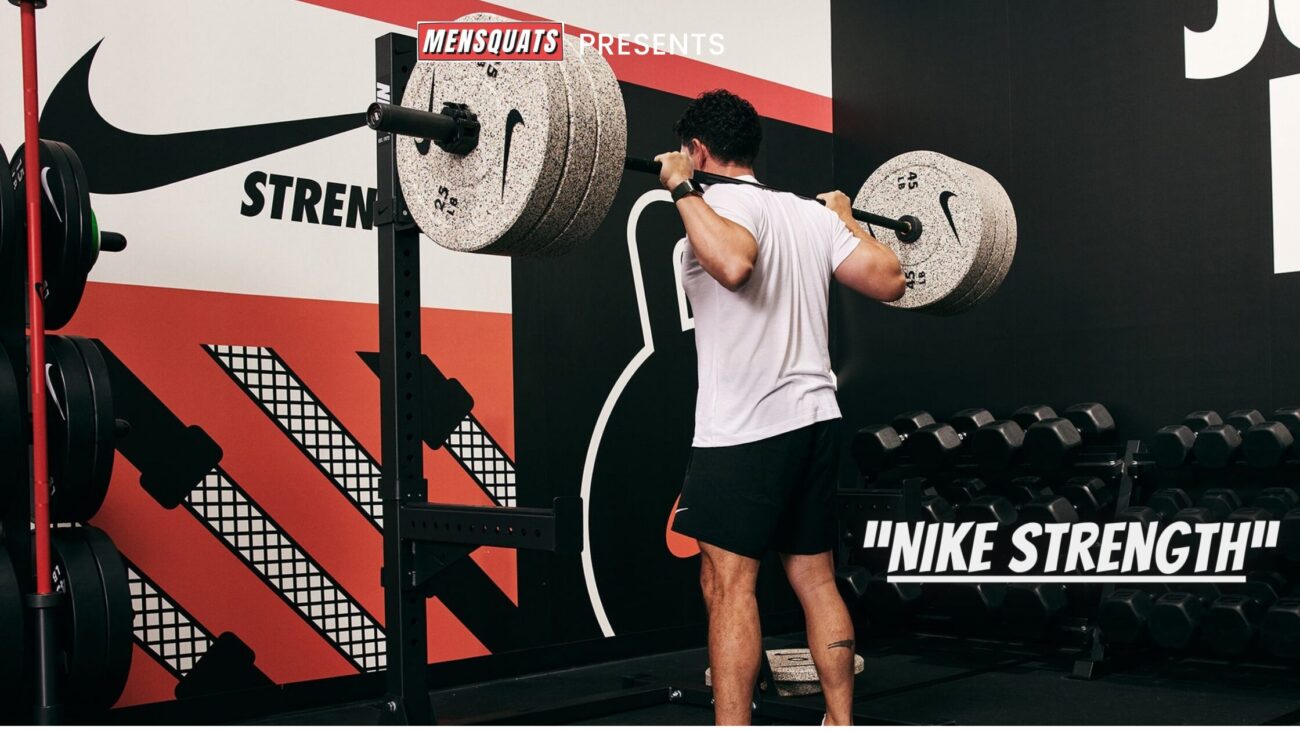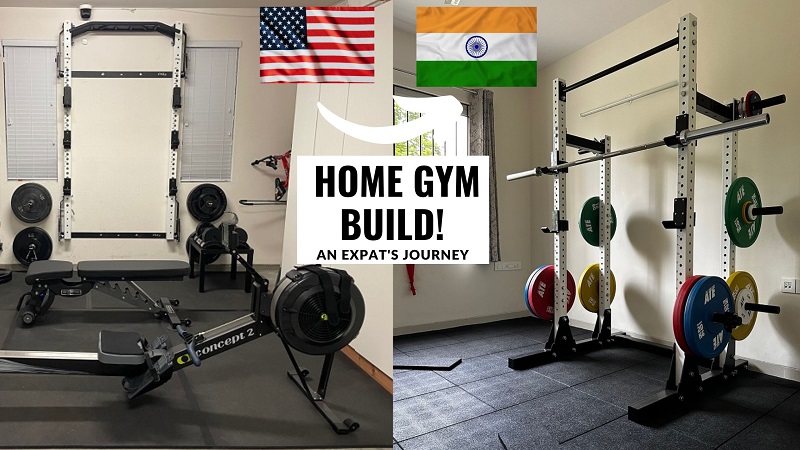Trap Bar deadlift vs. Conventional: Are Trap Bar deadlifts Safer?
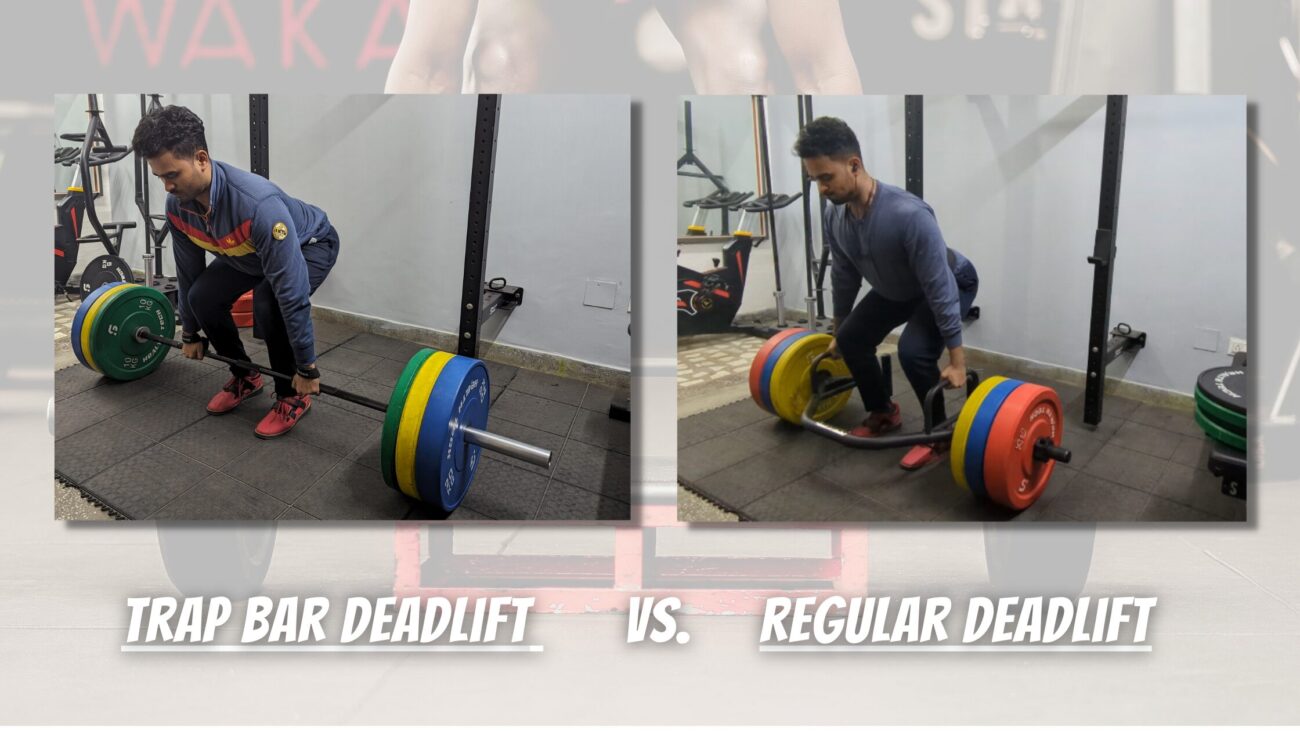
Let's explore the difference between the trap bar deadlifts Vs conventional, addressing common questions and benefits associated with each of these exercises.
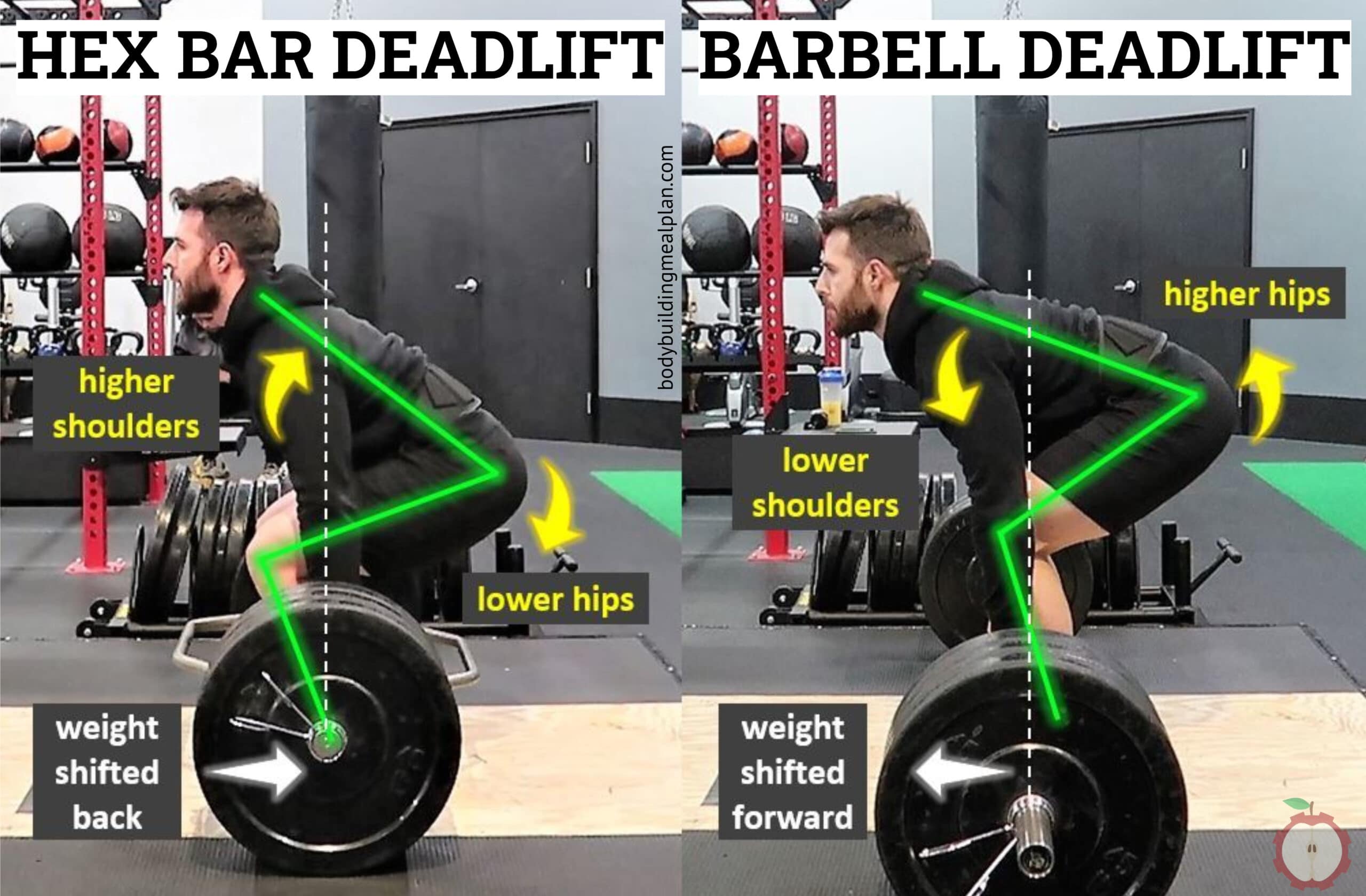
Though, the trap bar is not a recent invention; it has been in existence for a considerable period. Its origins date back to the 1980s when Al Gerard, a powerlifter, created it to minimise stress on his back during deadlifts.
This specialised barbell takes the form of a hexagon in the middle, allowing the lifter to step inside it, rather than holding the barbell with weights out in front, as typically done in a traditional deadlift.
Beginners often confuse the trap bar deadlifts with conventional because they both contain the term “deadlift.”
However, they are different movements, and understanding these differences is crucial for effective programming.
The trap bar deadlift involves a neutral grip with your hands hanging down, altering the mechanics of the lift. The weight position in front of your body requires you to pull the bar, emphasising the posterior chain, including the hamstrings, erectors, and glutes.
On the other hand, the barbell deadlift focuses more on posterior muscle groups, as the hips sit higher, making the hamstrings, erectors, and glutes the primary movers.
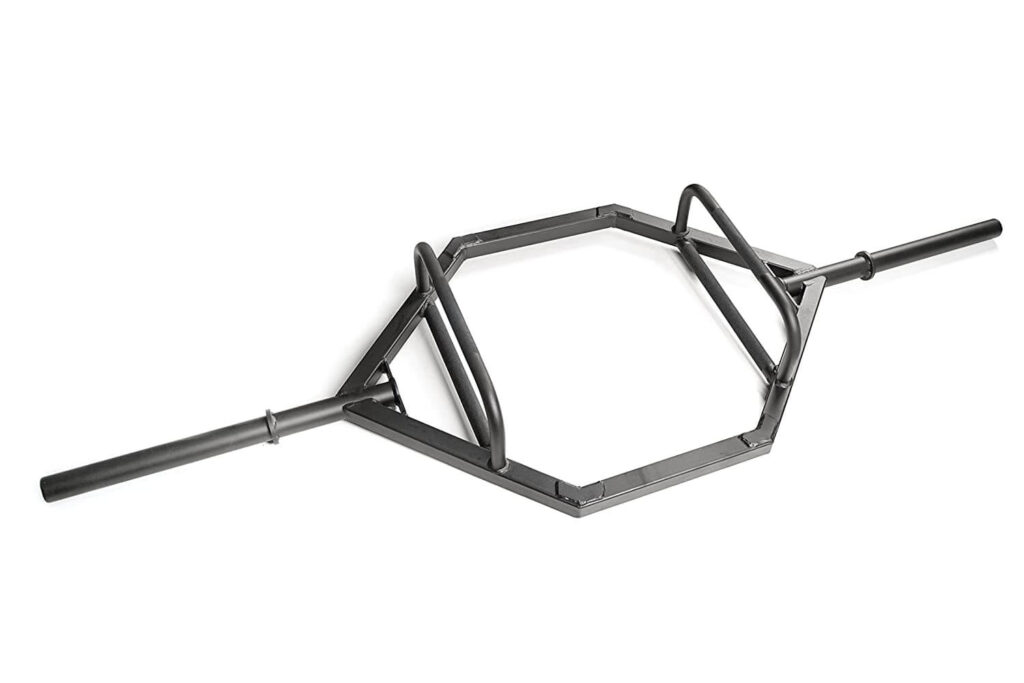
“Muscles worked” during these exercises vary due to differences in bar positioning.
- The trap bar deadlift engages the quads, glutes, and some posterior muscles.
- The barbell deadlift targets the hamstrings, erectors, glutes, and upper back more prominently.
What’s special about Trap Bar deadlift?
Most trap bars come in either a half or full-hex design. Both feature both high and low handles.
Many people perceive the trap bar deadlift as a simplified version of the classic barbell deadlift, frequently used as an alternative for individuals with back pain or mobility issues.
It is also commonly introduced to beginners and athletes by personal trainers and coaches due to its relative ease of learning.
However, despite its reputation as a “gentler” deadlift, the trap bar deadlift can actually serve to intensify your training.
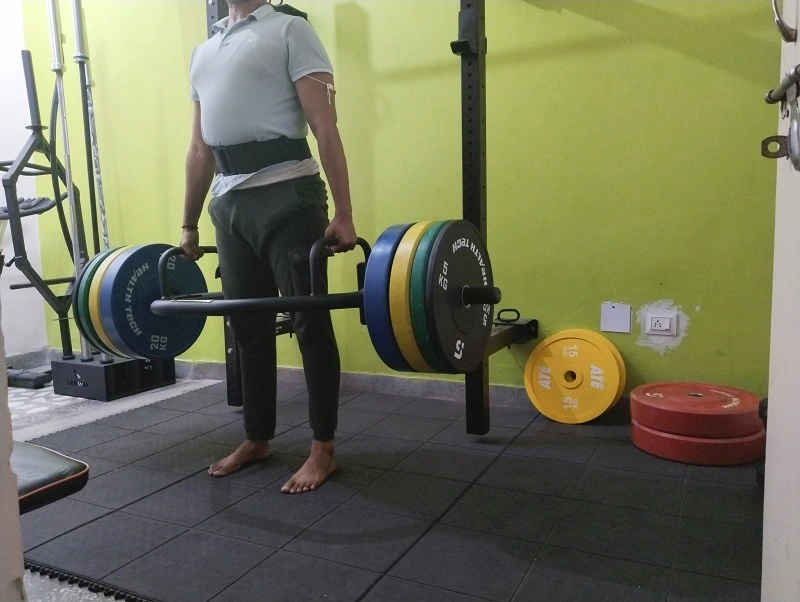
When it comes to Mechanics, the trap bar deadlift is still fundamentally a deadlift exercise. Although it appears to resemble a squat pattern, especially due to its more upright torso position, it retains the key characteristics of a deadlift.
The setup for the trap bar deadlift is more forgiving than the barbell deadlift.
With the weights positioned closer to your body, you have more flexibility to adjust your stance and starting position, making it ideal for experimentation and targeting specific muscle groups.
For those looking to enhance their conventional barbell deadlift, incorporating the trap bar variation can be beneficial.
By setting your hips lower and pushing hard with your legs, you can develop greater power off the floor.
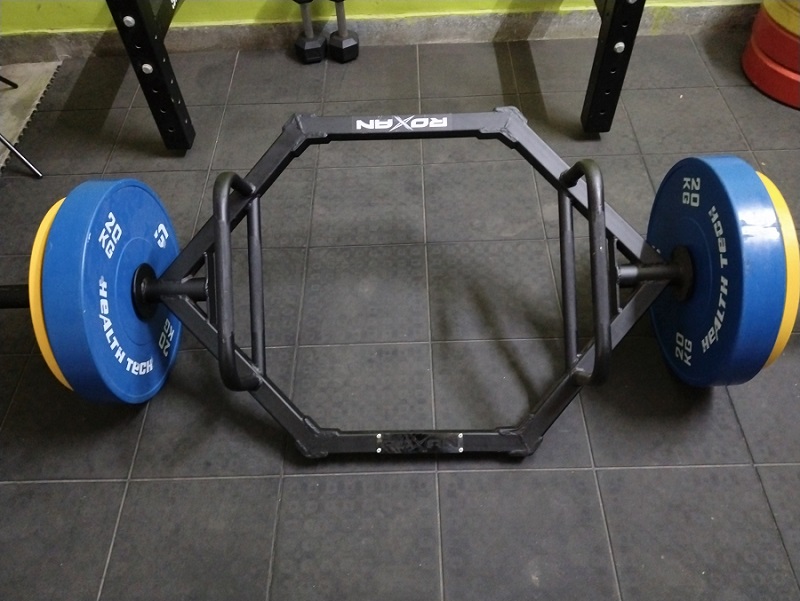
In particular, it strengthens your quadriceps and improves your ability to initiate the lift.
You can further challenge yourself by using the lower handles of the trap bar. This method makes the exercise feel more like a deficit deadlift.
This means that your starting position is lower and your grip is wider, emulating a mild snatch grip deadlift.
By opting for this variation, you can focus on building strength and improving your conventional deadlift.
BENEFIT: For those learning to lift, trap bars are highly user-friendly. They help in positioning and teach proper leg drive, emphasising the significance of mastering hip movement patterns for mobility and strength.
How to use a hex trap bar?
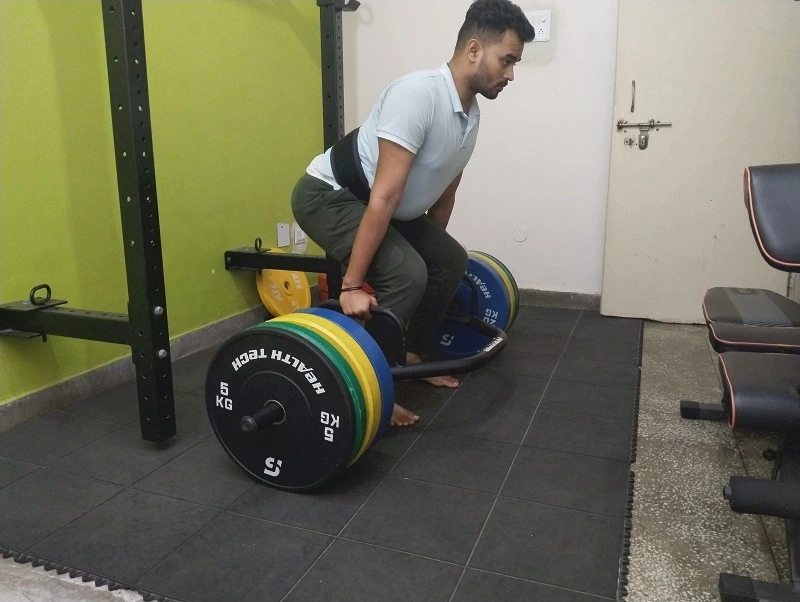
In the context of the Army Combat Fitness Test (ACFT), it’s recommended to use the low handles, as that’s what you’ll be using during the test.
However, you can explore the high handles if you have specific mobility issues.
How to set up?
- Prepare to lift: Maintain a hip-width stance for your feet, which is the conventional deadlift stance. If you’re unsure, start with your feet directly under your hips in a parallel position.
- Stance Adjustment: You can experiment with a slightly wider stance or slightly outward-rotated toes, but beginning with a standard stance is a good rule of thumb. Once you’ve established your stance, it’s time to grab the handles.
- Bending and Gripping: As you reach down, bend at the waist and knees. You want your knees to move forward and hips to lower. When gripping the handles, aim for the middle portion, neither too far forward nor too far back.
- Upper Body Stability: Keep your chin locked in a neutral position, and maintain a fixed gaze on a spot on the ground to ensure that your head and neck remain stable. This stability in the upper body is crucial for the duration of the lift.
- Execution of Pull: Now, for the actual pull, remember to utilise the foot tripod you established. Visualise pushing through your feet, and, simultaneously, use your upper body to pull the weight. It’s somewhat of a push-pull motion. Keep the quads engaged and squeeze them as you reach full extension.
- Lowering the bar back: When lowering the bar back to the ground, break at the hip and knees simultaneously, allowing the knees to move forward and the hips to lower.
It’s essential to ensure that the bar rests securely.
Trap Bar Deadlift Benefits:
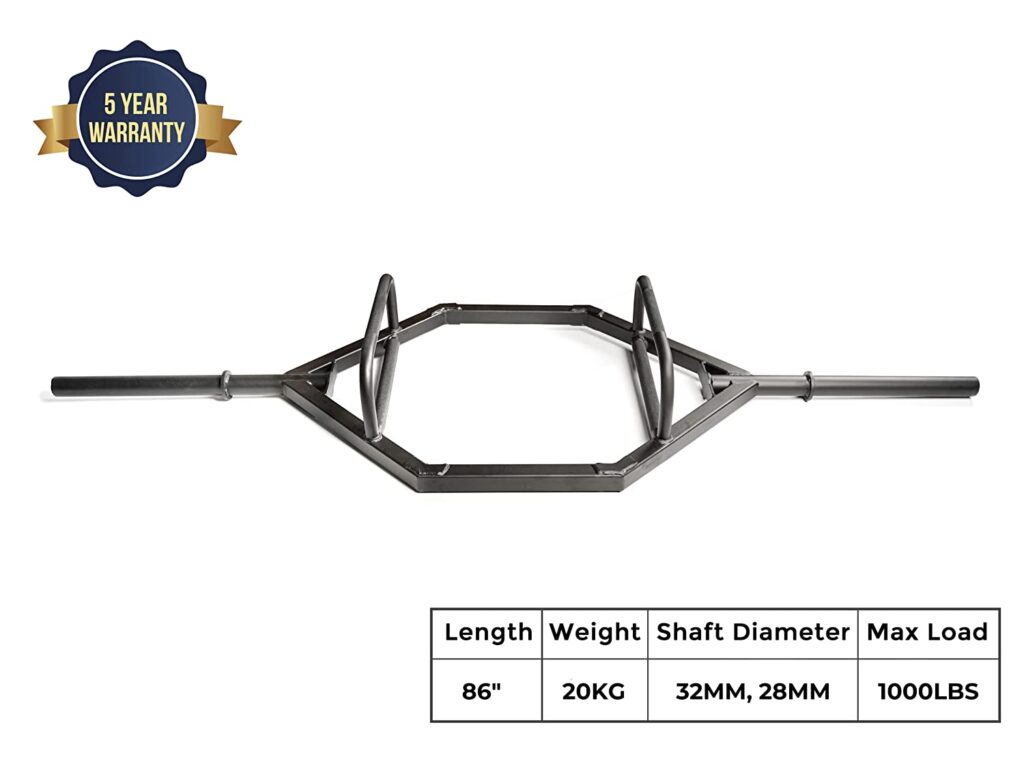
- Versatility: The trap bar deadlift can be adapted to teach both squat and hinge movement patterns, making it suitable for various goals and adaptations.
- Balanced Training: It’s effective for training legs, back, and glutes, with adjustable handle heights allowing for different movement patterns.
- Suitable for All Levels: The trap bar deadlift is suitable for both beginners and elite athletes due to its versatility and load capacity.
- Low chances of injury: It’s also gentler on the lower back, making it suitable for those with specific issues or recovery needs.
- Neutral Hand Position: You don’t need a mixed grip, as your hands remain in a neutral position. This can be advantageous for individuals concerned about bicep issues or those who simply prefer a neutral grip.
Barbell Deadlift Benefits:
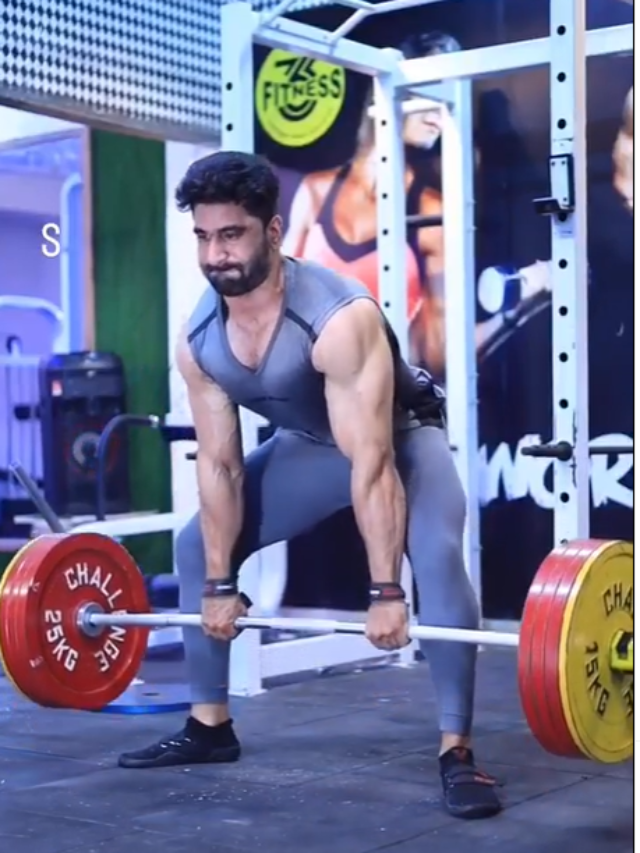
- Posterior Development: The barbell deadlift is excellent for building posterior chain strength, making it a key exercise for true posterior growth.
- Specific for Strength Sports: If you compete in strength sports, regular practice of the barbell deadlift is essential due to its specificity and impact on performance.
- Mental Reward: Performing a barbell deadlift can be mentally rewarding, providing a unique sense of accomplishment in the gym.
Is the trap bar deadlift better than the conventional deadlift?
One notable difference between the trap bar and the barbell is the type of hand positioning. Trap bars necessitate a semi-pronated grip (akin to a handshake grip), whereas barbells offer a choice of overhand, underhand, or alternative grips.
It’s important to note that the intention is not to dissuade the use of the straight bar.
Are Trap Bar deadlifts Safer?
- Straight bars are excellent for focusing on back muscles and hamstrings, provided you are free from lower back pain or injuries.
- Trap Bars, if you seek to perform deadlifts while reducing stress on your back due to injury or if you are an athlete aiming to develop explosive strength movements, should use this.
Conclusion
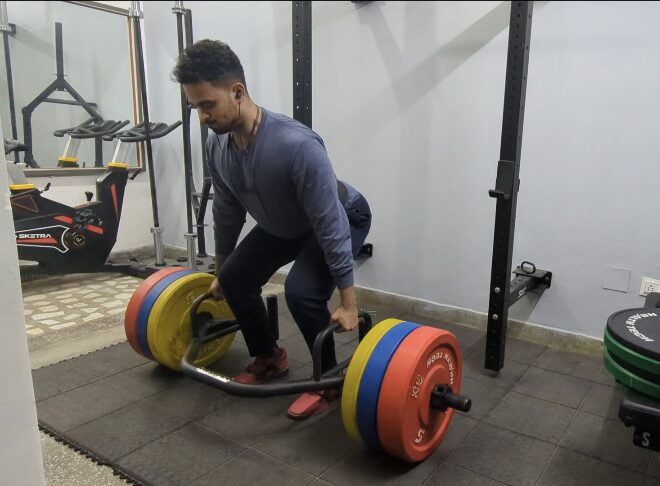
Ultimately, whether you choose the trap bar or barbell deadlift depends on you.
If you have no plans to compete in powerlifting and find that the trap bar deadlift better suits your needs, there’s no reason not to make it a significant part of your training regimen.
When considering the purchase of a trap bar, pay attention to the sleeve length, as they can vary between different models. For instance, the Leeway Fitness trap bar (in India) offers ample space on the sleeves for your weights.
FAQs
Q1: What Shoes To Use For Trap Bar Deadlifts?
Ideally, you want to wear flat-soled shoes for this exercise. Steer clear of those squishy running shoes and opt for something like Prowolf slippers.
Crossfit-specific footwear can also work well. Your foot placement is crucial, as the aim is to create a stable foundation with a “foot tripod.”
Q2: Can a trap bar be used by powerlifters?
However, the trap bar deadlift is not used in powerlifting competitions, so it may not be the ideal choice for powerlifters. The wide handles can be a drawback, especially for individuals with smaller frames, and it doesn’t allow for a true sumo stance.
Q3: How to get better at deadlifts?
Ensure that you maintain three points of contact with the floor: the bottom of your heel and both sides of your foot’s sole. This foot tripod is essential for stability during the trap bar deadlift. Try not to shift too far back onto your heels or too far forward onto your toes; instead, find a balanced, tripod-like stance.
Q4: What are the disadvantages of trap bar deadlifts?
- Limited Stance Options: Trap bar deadlifts do not allow for a true sumo stance, limiting options for lifters who prefer or need this specific stance.
- Not Used in Powerlifting Competitions: Trap bar deadlifts are not included in standard powerlifting competitions, which may be a drawback for those solely focused on powerlifting.
Q5: Does trap bar deadlift hit lats?
While the primary focus of trap bar deadlifts is on the lower body, they do engage the upper body muscles to some extent.
Q6: Is a trap bar better than a deadlift?
The trap bar allows the lifter to stand within it, enabling them to hold the trap bar closer to their lower limbs.
This positioning places the bar nearer to the centre of gravity, reducing the torque on the lower back. The trap bar activates the back muscles less than the straight barbell, redistributing the load from the back and hamstrings to the quadriceps.
